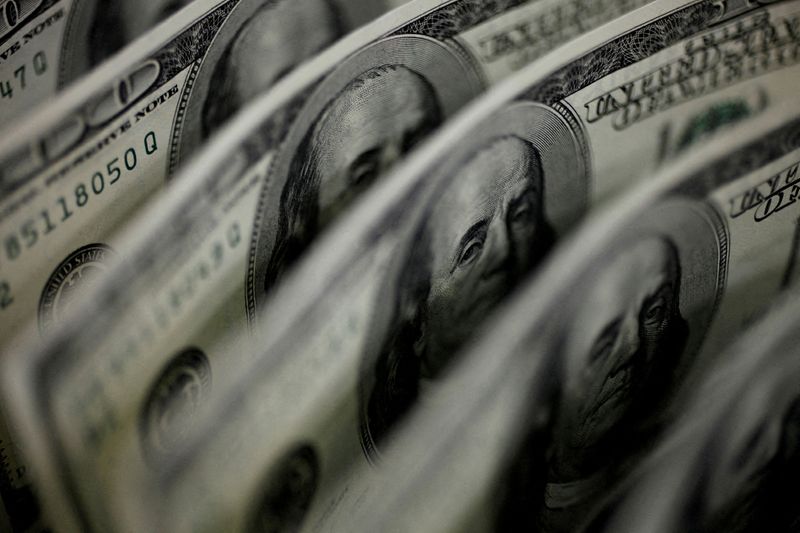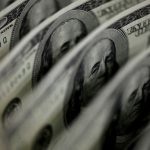TOKYO/LONDON (Reuters) -The dollar touched an eight-week high above 159 yen on Friday and traded at its highest in nearly five weeks against sterling, with the Federal Reserve’s patient approach to cutting interest rates contrasting with more dovish stances elsewhere.
The dollar index, which measures the currency against six others, spiked 0.41% overnight, erasing declines for the week, following a second successive rate cut at the Swiss National Bank and hints from the Bank of England for a reduction in August.
Meanwhile, the yen has remained on the back foot after the Bank of Japan’s decision last week to hold off on reducing bond buying stimulus until its July meeting.
As a result, “traders punished the yen with renewed enthusiasm,” driving it past the closely watched 159 per dollar level on Friday, said Tony Sycamore, market analyst at IG.
The BOJ, at the behest of Japan’s finance ministry, spent some 9.8 trillion yen ($61.64 billion) to yank the currency back from a 34-year trough of 160.245 per dollar, reached on April 29.
Because of that, the U.S. Treasury on Thursday added Japan to a list of countries it is monitoring for potential labelling as a currency manipulator. China is among others on the list.
Even so, Japan’s top currency diplomat Masato Kanda stressed on Friday that Tokyo stands ready to take further “resolute” action against “speculative, excessive volatility”.
“The market is getting jittery once again, you can see that in the sell-off today. That’s not about the fundamentals of the market, that’s just the market being nervous about these levels,” City Index market strategist Fiona Cincotta said.
“The concern is over if and when – and probably more likely ‘when’ at these levels – that the Japanese authorities will step in,” she said.
The dollar last traded 0.1% weaker at 158.77 yen, after earlier edging as high as 159.12.
The U.S. currency was up 0.1% at 0.8919 francs, following a 0.78% surge the day before.
The dollar index was up 0.1% at 105.7, set for a flat finish to the week, following two straight weeks of gains.
Sterling was flat at $1.266, not straying far from the $1.2655 low from Thursday, a level last seen on May 17. The BoE kept rates on hold this week, but some policy makers said the decision not to cut was “finely balanced”.
Data on Friday showed UK retail sales rose by more than expected in May, thanks in large part to better weather.
A separate report showed British business growth slowed to a seven-month low in June, weighed down by nerves about the July 4 general election.
The euro eased 0.1% to $1.0692 after a series of preliminary surveys for June showed service sector activity in France contracted this month, while activity across the German economy slowed.
Fed officials, meanwhile, left policy unchanged at their June meeting, and shaved previous projections for three quarter-point cuts this year to one, even as inflation has cooled and the labour market has eased.
“The resilience of the U.S. economy has afforded the Federal Reserve a unique position, enabling the U.S. central bank to employ higher interest rates as a tool to combat inflation more swiftly than it otherwise could,” said James Kniveton, senior corporate FX dealer at Convera.

“With other major central banks adopting more dovish stances, this has the potential to continue to bolster the dollar over the short to medium term.”
($1 = 158.9900 yen)
To read the full article, Click Here

